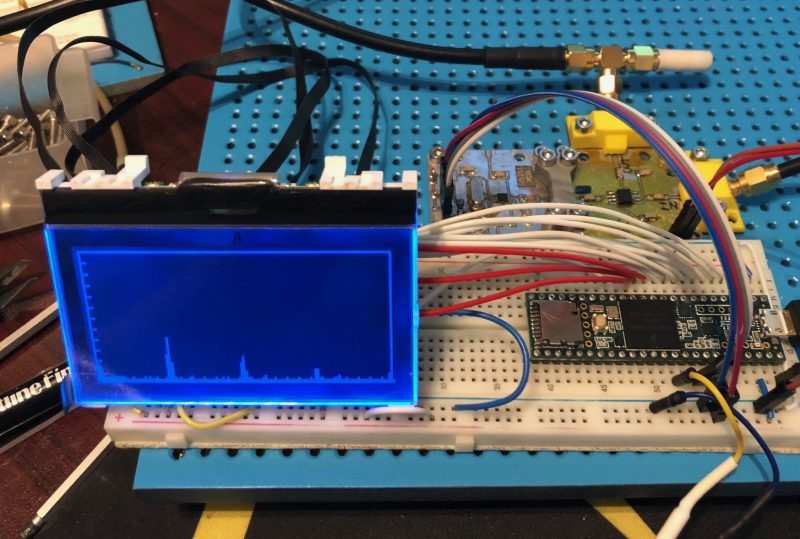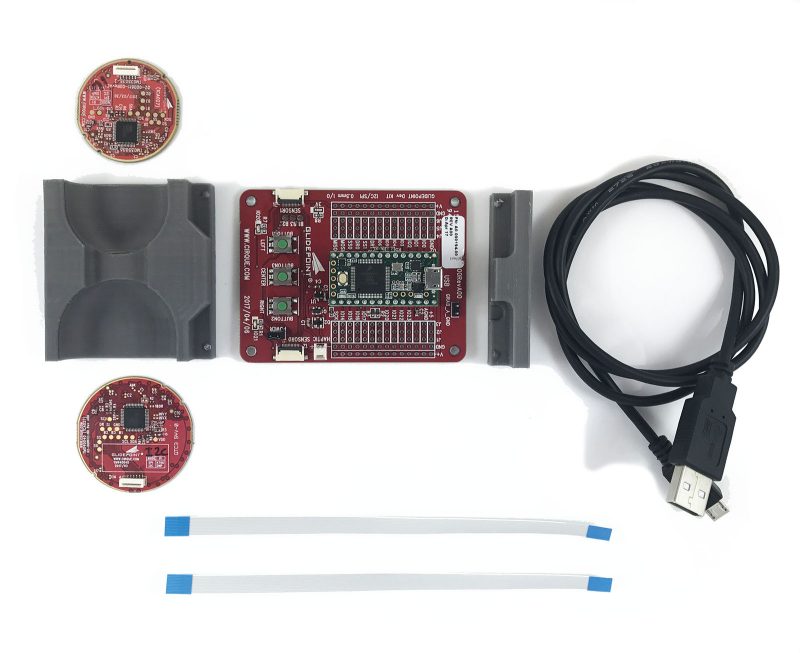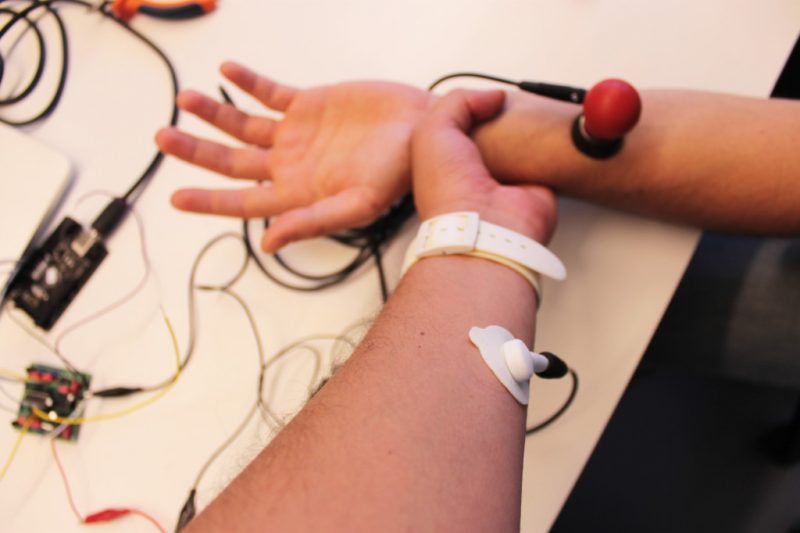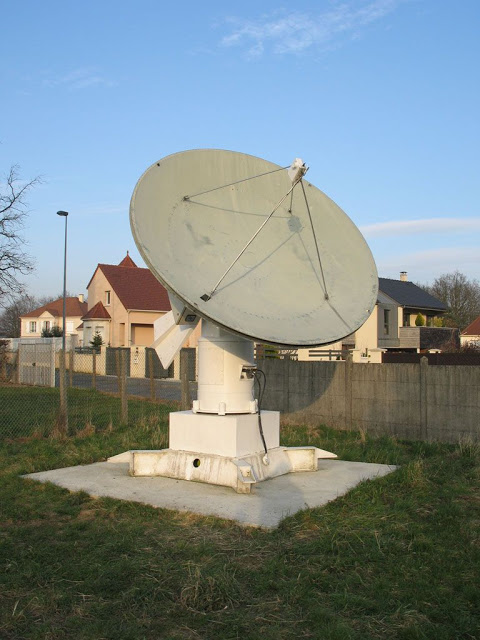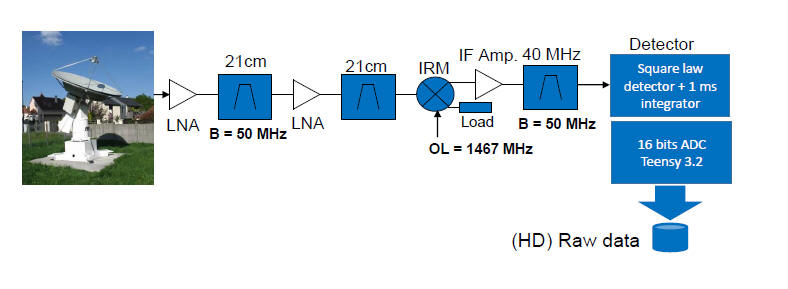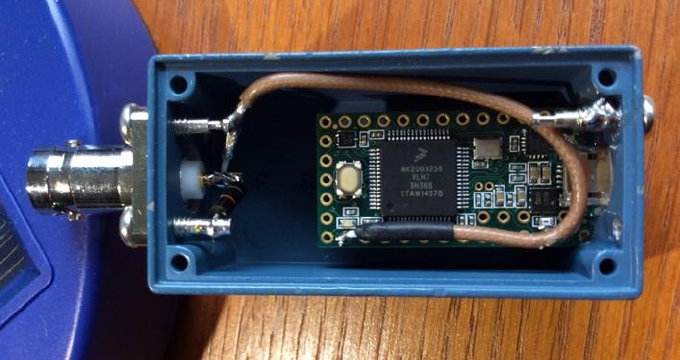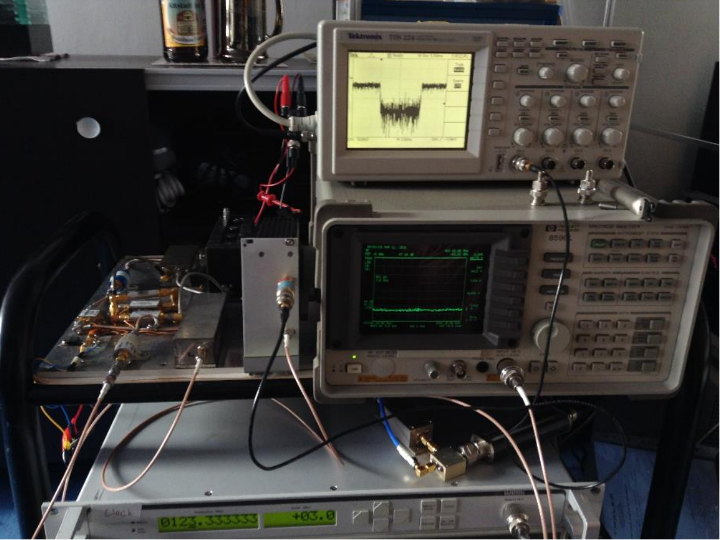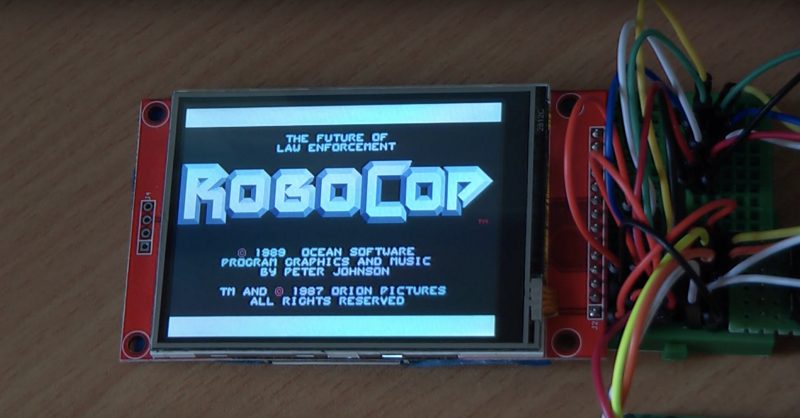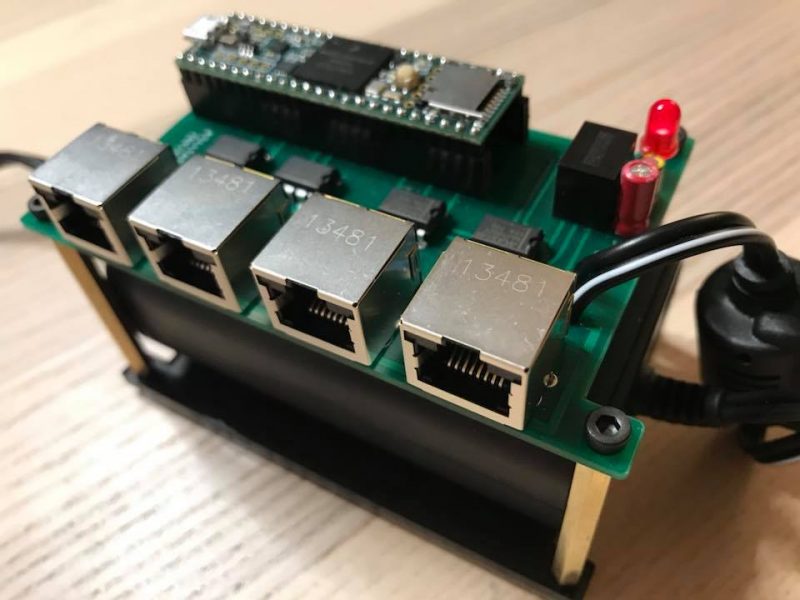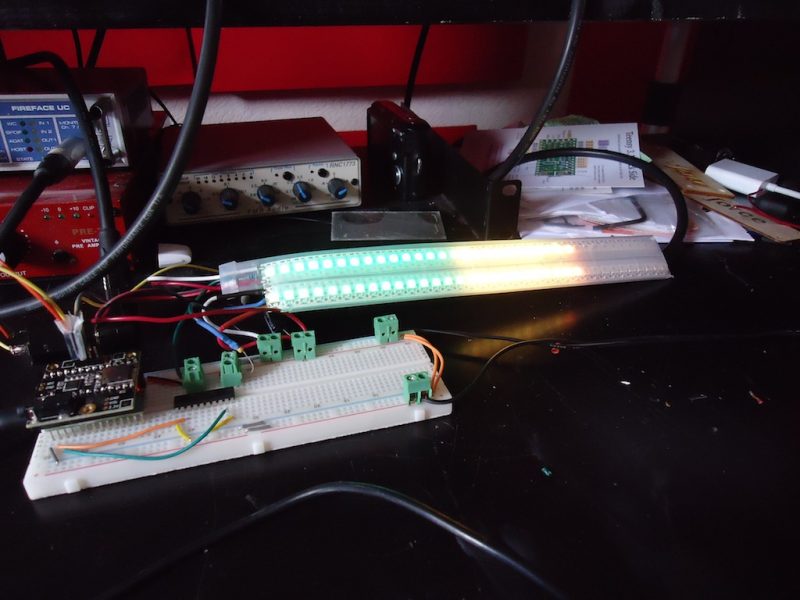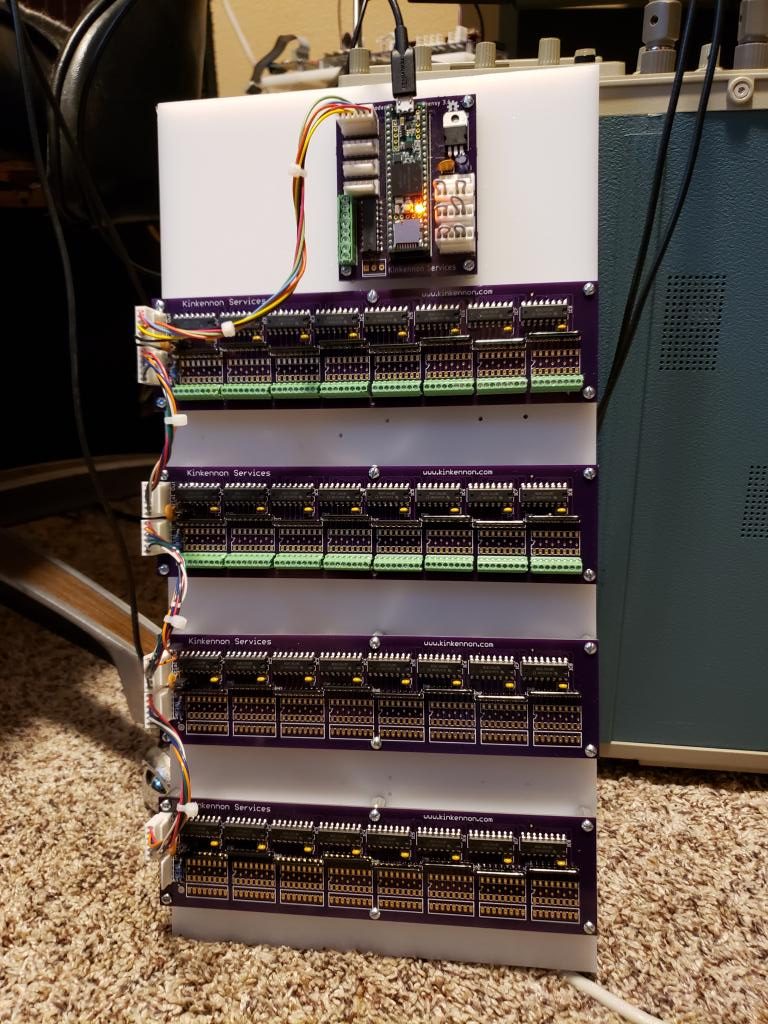Musician and maker Ghost in Translation has made a simple polyphonic FM synth called SimpleSynth.

SimpleSynth is a Teensy-based polyphonic synth with a pleasingly simple design. It can perform FM, AM and ring mod synthesis with one carrier and one modulator, and has arpeggiator and drone modes. Attack, decay and release can be controlled, as well as modulator gain and frequency.
Making use of a Teensy audio board, Teensy 3.2 and nine potentiometers, it is compatible with any midi instrument or DAW that sends MIDI note messages, and has a specific light-up feature when used with the Novation Launchpad S. Ghost in Translation posted about SimpleSynth on the forum, with a demo uploaded to YouTube and detailed build notes with code on GitHub.
